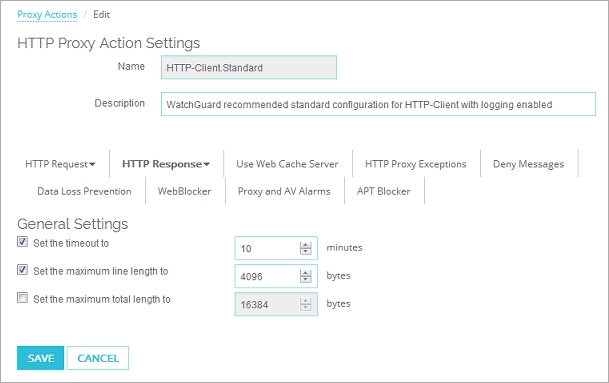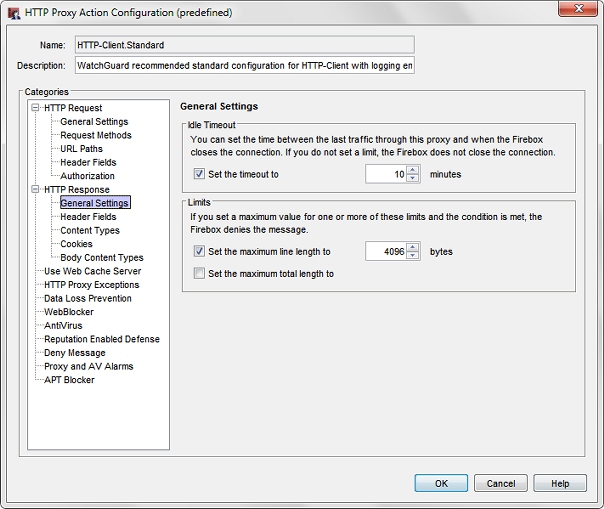
Related Topics
HTTP Response: General Settings
On the General Settings page, you can configure basic HTTP parameters such as idle time out, and limits for line and total length.
- In the HTTP Proxy Action configuration, select HTTP Response > General Settings.

HTTP Proxy Action HTTP Response General Settings configuration in Fireware Web UI

HTTP Proxy Action HTTP Response General Settings configuration in Policy Manager
- To set limits for HTTP parameters, select the applicable check boxes. Type or select a value for the limits.
Set the timeout to
Controls how long the HTTP proxy waits for the web server to send the web page. When a user clicks a hyperlink or types a URL in a web browser, it sends an HTTP request to a remote server to get the content. In most browsers, a message similar to Contacting site..., appears in the status bar. If the remote server does not respond, the HTTP client continues to send the request until it receives an answer or until the request times out. During this time, the HTTP proxy continues to monitor the connection and uses valuable network resources.
Set the maximum line length to
Controls the maximum allowed length of a line of characters in HTTP response headers. Use this property to protect your computers from buffer overflow exploits. Because URLs for many commerce sites continue to increase in length over time, you may need to adjust this value in the future.
Set the maximum total length to
Controls the maximum length of HTTP response headers. If the total header length is more than this limit, the HTTP response is denied.
- To change settings for another category in this proxy, see the topic for that category.
- Save the configuration.
If you modified a predefined proxy action, when you save the changes you are prompted to clone (copy) your settings to a new action.
For more information on predefined proxy actions, see About Proxy Actions.